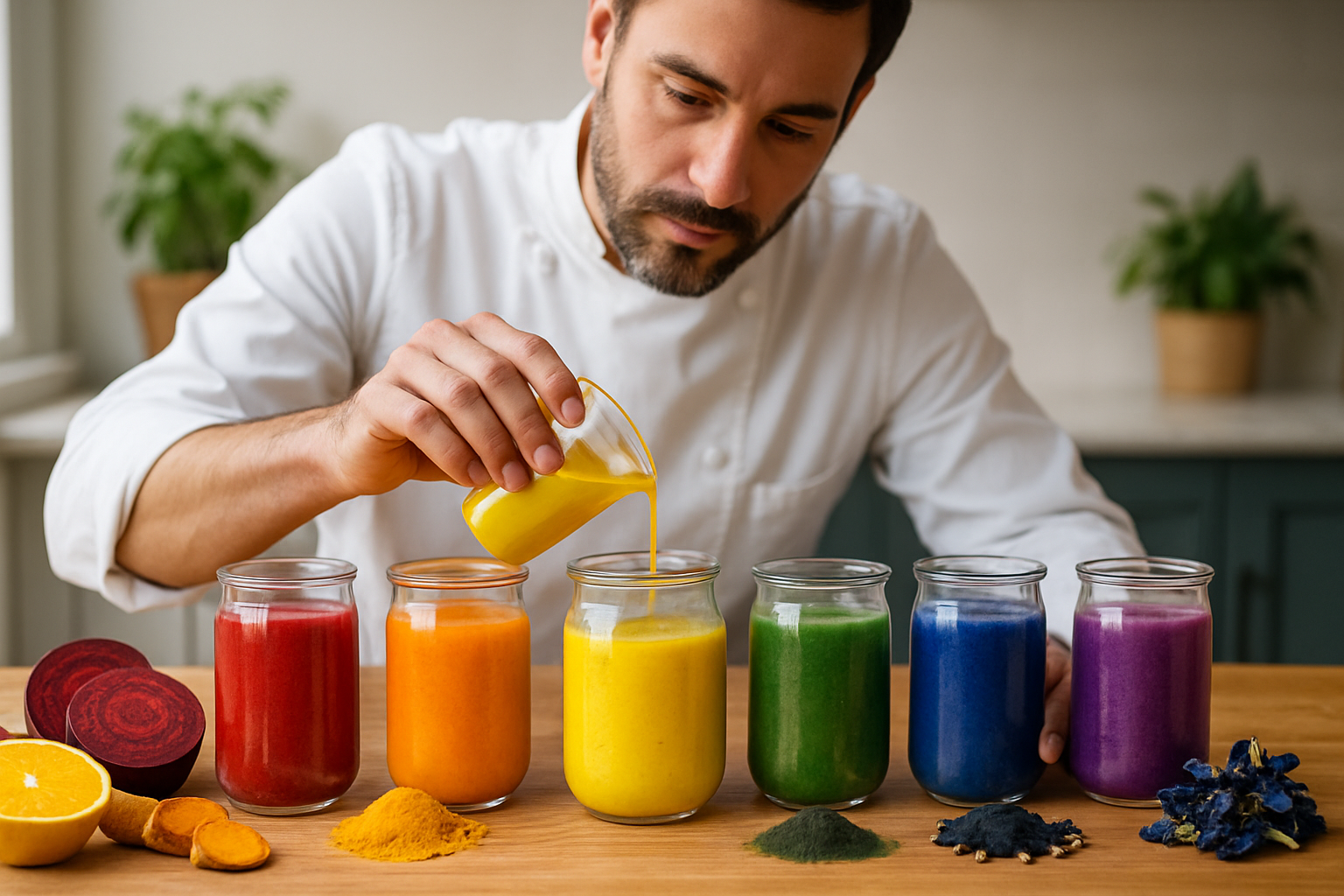Taste the Rainbow: Exploring Natural Food Dyes
Vibrant hues and eye-catching colors have long been a part of our culinary landscape. But as consumers become more health-conscious, the demand for natural alternatives to artificial food coloring is on the rise. This article delves into the world of natural food dyes, exploring their sources, applications, and benefits. From beetroot reds to spirulina blues, we'll uncover the rainbow of possibilities that nature offers to enhance the visual appeal of our meals.

From Garden to Plate
The journey of natural food dyes begins in the garden or on the farm. Beets, with their deep crimson flesh, yield a rich red hue perfect for coloring desserts and beverages. Turmeric, a golden spice revered for its anti-inflammatory properties, imparts a sunny yellow to savory dishes and smoothies. Spirulina, a blue-green algae, offers a unique aquamarine shade that can transform ordinary foods into Instagram-worthy creations. By understanding the color profiles of various fruits, vegetables, and spices, home cooks and professional chefs alike can create a diverse spectrum of natural dyes to elevate their culinary creations.
Techniques for Extraction and Application
Extracting natural food dyes requires careful techniques to preserve their vibrant colors and nutritional value. Juicing, boiling, and infusing are common methods used to extract pigments from plant sources. For example, simmering red cabbage leaves in water creates a purple dye that changes color based on pH levels, offering a fun and educational aspect to cooking. When applying natural dyes, it’s important to consider factors such as heat sensitivity and pH interaction to achieve the desired results. Experimenting with different extraction methods and application techniques can lead to exciting discoveries in the kitchen.
Beyond Food: Natural Dyes in Beverages
The world of natural food dyes extends beyond solid foods into the realm of beverages. Craft cocktail bars are embracing natural colorants to create visually stunning drinks without artificial additives. Butterfly pea flower tea, which changes from blue to purple when mixed with citrus, adds a magical element to cocktails and mocktails. Hibiscus flowers infuse a vibrant fuchsia hue into teas and lemonades, while matcha powder provides a soothing green color to lattes and smoothies. These natural dyes not only enhance the visual appeal of beverages but also contribute unique flavors and potential health benefits.
The Future of Food Coloring
As consumers continue to prioritize clean labels and natural ingredients, the food industry is responding with innovative solutions for natural coloring. Research into new plant-based sources and advanced extraction techniques is ongoing, promising an even wider range of natural food dyes in the future. Additionally, the intersection of natural dyes and food science is leading to exciting developments, such as color-changing ice creams and pH-sensitive packaging that indicates freshness. As we move forward, the possibilities for incorporating natural food dyes into our culinary experiences are boundless, offering a more wholesome and visually appealing approach to food and drink.
Useful Tips & Facts
• Red cabbage juice can be used as a natural pH indicator in cooking experiments.
• Beetroot powder can be added to smoothies for a vibrant pink color and nutritional boost.
• Activated charcoal creates a dramatic black hue but should be used sparingly due to its binding properties.
• Freeze-dried fruit powders offer intense colors without adding excess moisture to baked goods.
• Natural food dyes may have shorter shelf lives compared to artificial alternatives, so proper storage is crucial.
• Some natural dyes, like turmeric, can stain cooking utensils and surfaces, so use caution when handling.
In conclusion, the world of natural food dyes offers a fascinating blend of art, science, and nutrition. By embracing these colorful alternatives, we can create visually stunning culinary experiences that are both delicious and health-conscious. As we continue to explore the rainbow of possibilities that nature provides, we open up new avenues for creativity in the kitchen and beyond. The future of food coloring is bright, natural, and full of potential for innovation and discovery.





